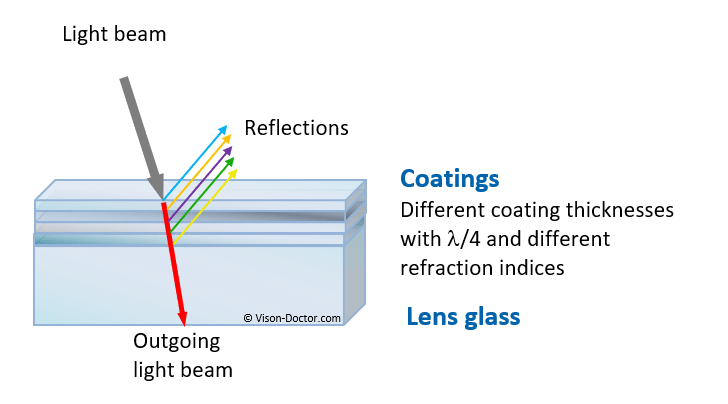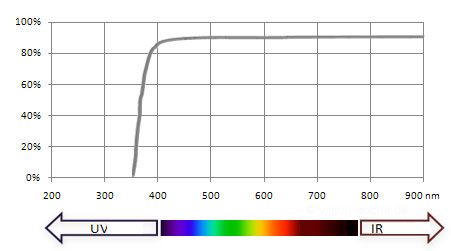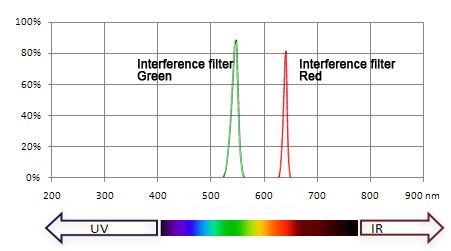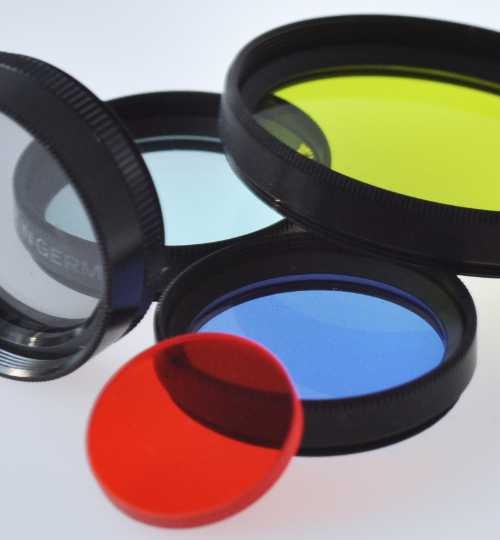























High UV portions can sometimes be generated in daylight in case of outdoor applications or when using mercury vapour lamps and fluorescent lamps. Even when using UV light directly in the application, it should often be blocked in order to observe the fluorescence of glue, for instance, which usually absorbs light in the UV range but reflects light in the visible range. Blocking the UV portion generates high-contrast images, as the chromatic longitudinal error (chromatic aberration) and chromatic lateral error are avoided. Any blue cast is also avoided.
The UV elimination filter appears almost completely translucent from the outside, i.e. when used with a colour camera there is no colour-changing effect.

For this purpose, several interference coatings are evaporated onto both sides of absolutely clear filter glass. Like the UV elimination filter, it avoids chromatic aberration which leads to blurred images poor in contrast. In addition to the UV range, also the IR range of light is blocked which would also result in colour-changed images, as CCD sensors are very sensitive to IR light which would be interpreted as red. In case of colour cameras, this filter is very often integrated in the camera housing before the sensor. The same effect of overemphasis of blue and, in particular, red image information can be observed when using a monochrome camera and the corresponding light, too, so that this filter is also used there.
Suitable for colour and monochrome cameras.


Vision-Doctor.com is a private, independent, non-commercial homepage project and not a technology provider or system integrator. Suitable technologies and further professional support can be obtained from the companies & partners listed below.
If necessary, I will be happy to provide a quick recommendation, contacts and brief information.
